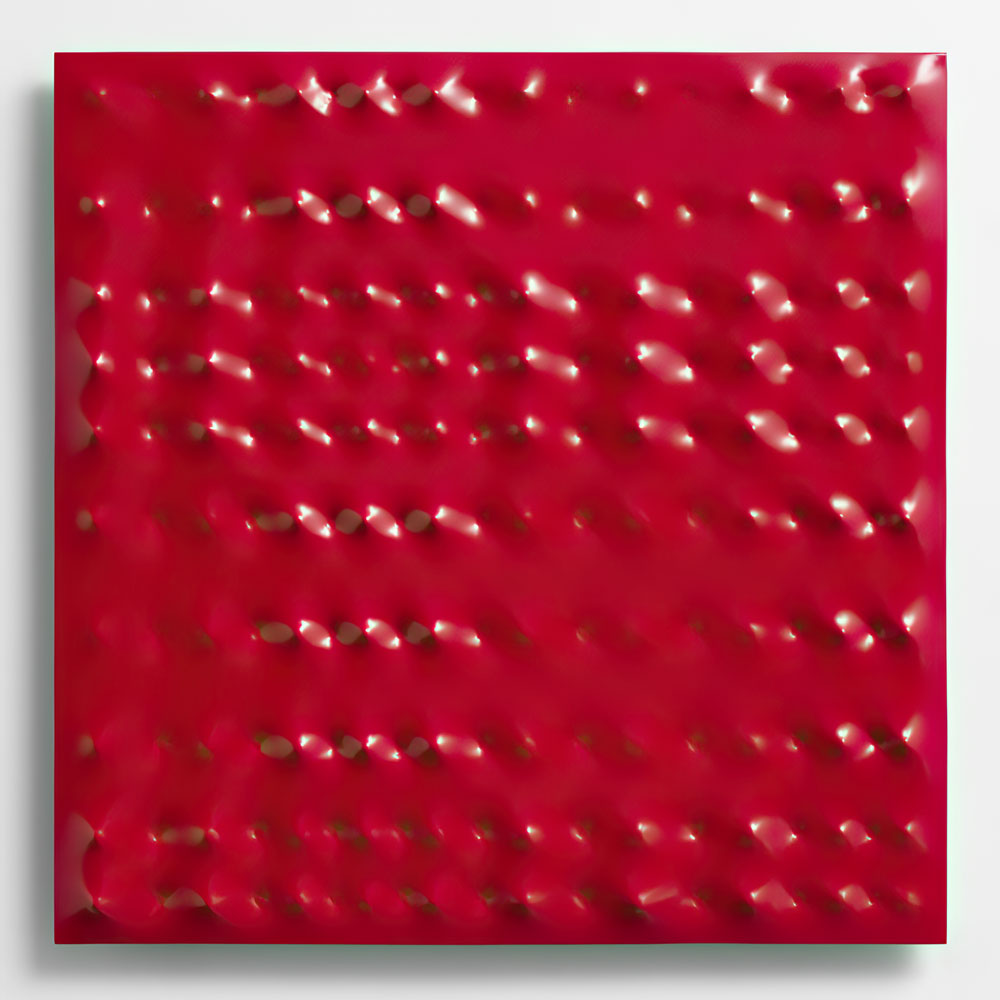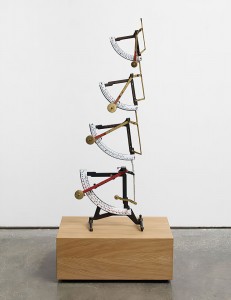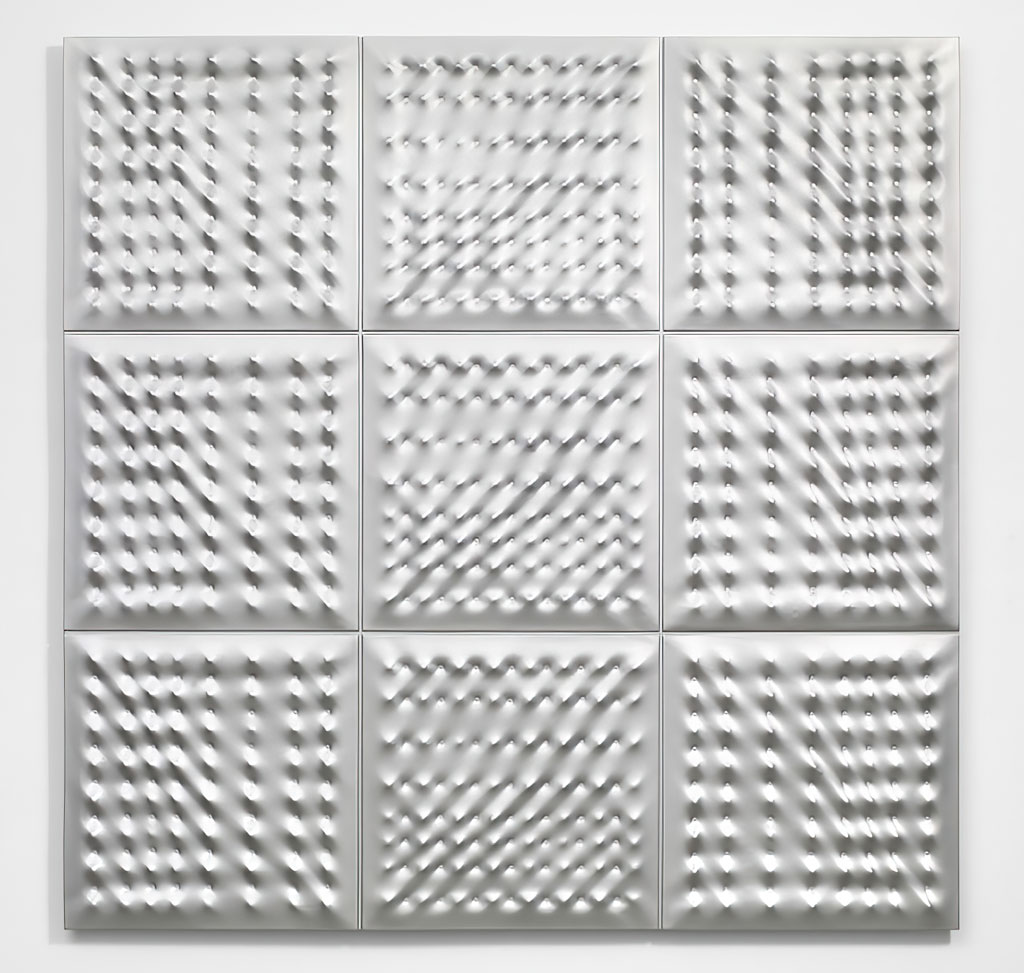ART-PRESENTATION: Enrico Castellani-Sculpture
 Enrico Castellani is known for his relief paintings, starting with two-dimensional works formed by fastening canvas over protruding nails to allow for variations in positive and negative space, light, and shade. This idea later evolved into shaped canvases, diptychs, and triptychs in a range of colors, though white predominated.
Enrico Castellani is known for his relief paintings, starting with two-dimensional works formed by fastening canvas over protruding nails to allow for variations in positive and negative space, light, and shade. This idea later evolved into shaped canvases, diptychs, and triptychs in a range of colors, though white predominated.
By Dimitris Lempesis
Photo Lévy Gorvy Gallery Archive

Completed between the years of 2006 to 2013, the works by Enrico Castellani in the exhibition “Castellani | Sculpture” suggest important links to the artist’s earliest experiments in metal, and evince his skill in pushing the boundaries of materiality and space. From the early 1960s onward, Castellani experimented with brass, zinc, bronze, and other plastic or ductile materials capable of being modelled for small groups of works. The catalyst for his late aluminium series was an abiding interest in mirrored surfaces and his experiments using glass with a silver interior. While deceptively similar to his paintings, Castellani’s wall-based sculptures, weighing between 20 and 350kg, have a distinctive presence and create extraordinary visual experiences for the viewer through their surfaces and the ways in which they occupy space. Seen together for the first time, these works spotlight the enduring radicality of Castellani’s approach, and serve as both climax of and coda to decades of his tireless experimentation in the iterations of his renowned ‘Surfaces’ works. Highlights of the exhibition include “Superficie argento” (2006), a dramatic nine-panel work that encapsulates Castellani’s preoccupation with space, surface, and materiality, and “Superficie rossa” (2006). These and other works from this historic series are juxtaposed with an untitled standing sculpture comprising four scales from 1973, a work that embodies the force of Castellani’s decades-long investigation into positive and negative space, and his ambition to establish a potent artistic language that continues to influence younger generations of artists today.
Enrico Castellani was a pivotal figure in the European postwar avant-garde. Born in Castelmassa, Italy, Castellani studied art and architecture at Belgium’s Académie Royale des Beaux-Arts and École Nationale Supérieure d’Architecture et des Arts Décoratifs de la Cambre in the early 1950s. After moving to Milan in 1956, he began to make art that challenged the conventional separation of painting, sculpture, and architecture, searching instead for a paradigm that combined aspects of all three. In 1959, he completed the first of his celebrated “Superficie”, a series defined by the rhythmic protrusions and recessions of a monochrome surface, typically stretched taut over a pattern of nails. Following a string of successful exhibitions throughout the 1960s, he settled in the small hamlet of Celleno, Italy, in the early seventies, where he would live and work for the rest of his life. While the purview of his practice expanded to include a variety of materials and formal concerns, his pursuit of a poetic coalescence of painting, sculpture, and architecture never wavered. In 1959 Castellani and Piero Manzoni opened Galleria Azimut and co-founded the experimental journal, Azimuth. Together, they organized innovative exhibitions (including Castellani’s debut show) and published essays that provided alternatives to the dogmatic ideologies of Surrealism and Art Informel, which dominated the European art scene at the time. Through his art and writings, Castellani advanced an approach to painting that refuted the traditional conception of the canvas as a transparent window, opening his work onto a new space of topographical abstraction that engaged notions of space, time, infinity, and flux.
Photo: Enrico Castellani, Superficie Rossa, 2006. Enamel with pulverized aluminum on cast aluminum. © Enrico Castellani / Artists Rights Society (ARS), New York / SIAE, Rome. Photo: Stephen White & Co.
Info: Lévy Gorvy Gallery, 22 Old Bond Street, London, Duration: 15/1-8/4/2021, Days & Hours: Mon-Sat 10:00-18:00, www.levygorvy.com

